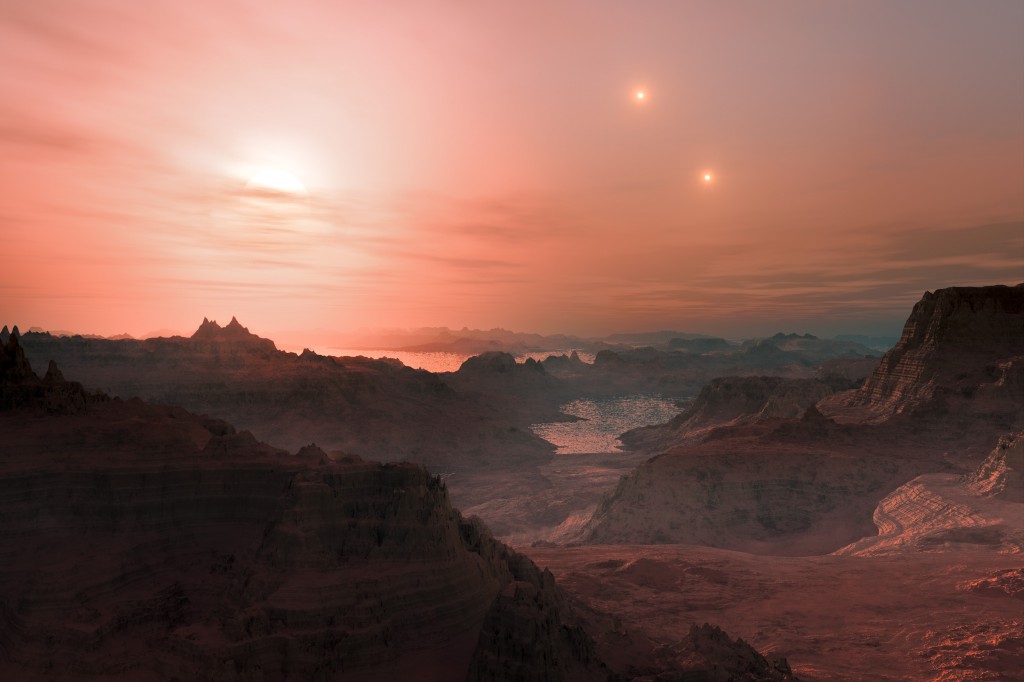A few posts back, we explored how even with a highly precise planet-hunting instrument such as HPF, radial velocity noise from magnetic activity on our target stars may hinder our ability to detect exoplanet signals. In that post, we used Gliese 581 and its planetary system as an example of how stellar activity such as the spots we see on our own Sun can create signals that look deceptively like exoplanets. The results of that study generated a lot of public and media interest, and one of the most frequent questions presented to our team was whether any of the other well-known exoplanet systems might be secretly harboring any activity-induced false positive planets. It is a great question, and one we very much wanted to pursue! HPF team members Paul Robertson and Suvrath Mahadevan published a new research paper on the arXiv preprint server today (it will appear in the Astrophysical Journal Letters shortly) discussing a stellar activity investigation of Gliese 667C–the “other” most-famous red dwarf planet system. There is a lot of technical information in the research article, but one bit of good news jumps out immediately: Gliese 667Cc, widely believed to be a promising candidate for low-mass exoplanets in the habitable zone, looks to be real! Let’s look briefly at the results in more detail.
About Gliese 667C

An artist’s rendition of what sunset might look like on Gliese 667Cc. The host star, Gliese 667C, orbits a distant stellar binary (Gliese 667AB), seen in the background. Image credit: ESO/L. Calçada
Gliese 667C, or GJ 667C, is an M dwarf star that is part of a triple star system about 22 light-years away from Earth. It is a distant companion to GJ 667AB, a binary pair of more massive stars. In 2013, astronomers using the HARPS spectrograph discovered a pair of planets around this star–GJ 667Cb and GJ 667Cc. Both of these planets have super-Earth masses, but planet c is especially interesting, since it has a minimum mass just 4 times that of Earth and it lies in the stellar habitable zone! This makes Gliese 667Cc one of the best candidates yet for a potentially habitable planet.
To make things even more compelling, a separate group of researchers using different data reduction and frequency analysis techniques announced as many as five additional super-Earth planets around GJ 667C shortly thereafter. This announcement left the system with up to three small planets in the star’s habitable zone!
But there is a catch. It was clear from the original HARPS analysis that stellar activity is present in the data for GJ 667C. Aside from planet b, essentially all the planet candidates have periods close to the star’s 105-day rotation period or its aliases. If we are to be truly confident that Gliese 667C hosts any habitable zone planets, we must correct for this activity and see how many signals remain.
Our Results
We are fortunate that a large amount of data exists for this star, including a good number of stellar activity indicators. For Gliese 667C, we found the most sensitive indicator was the width of the HARPS cross-correlation function, or FWHM for short. This is a technically complicated measurement, but it can be understood simply as the average width of the star’s spectral absorption lines. If magnetic features like starspots are altering the spectrum in a way that would produce false Doppler shifts, FWHM should change.
As for Gliese 581, we found that Doppler measurements made during certain active periods were contaminated by stellar activity signals, as revealed by correlations between the star’s velocity and FWHM. Fortunately, we were again able to model and remove the stellar activity signals and re-model the star’s planetary system.
So, on to the obvious question: are the planets real? The good news is that the signals of planets b and c were still present after we removed the stellar activity effects, suggesting those planets are real. For the rest of the planet candidates, the outcome is not so exciting. “Planet d,” which was believed to orbit near the outer edge of the habitable zone, is definitely a stellar activity signal created by the star’s rotation. As for the rest of the planets, we cannot be so sure. The signals associated with them are so small that they cannot be seen with “industry-standard” analysis techniques, regardless of whether we have corrected for activity. However, considering how successful our activity correction has been at boosting the signals of real planets, the fact that we see no sign of any of these planet candidates after the activity correction leads us to strongly doubt their existence.

 RSS - Posts
RSS - Posts